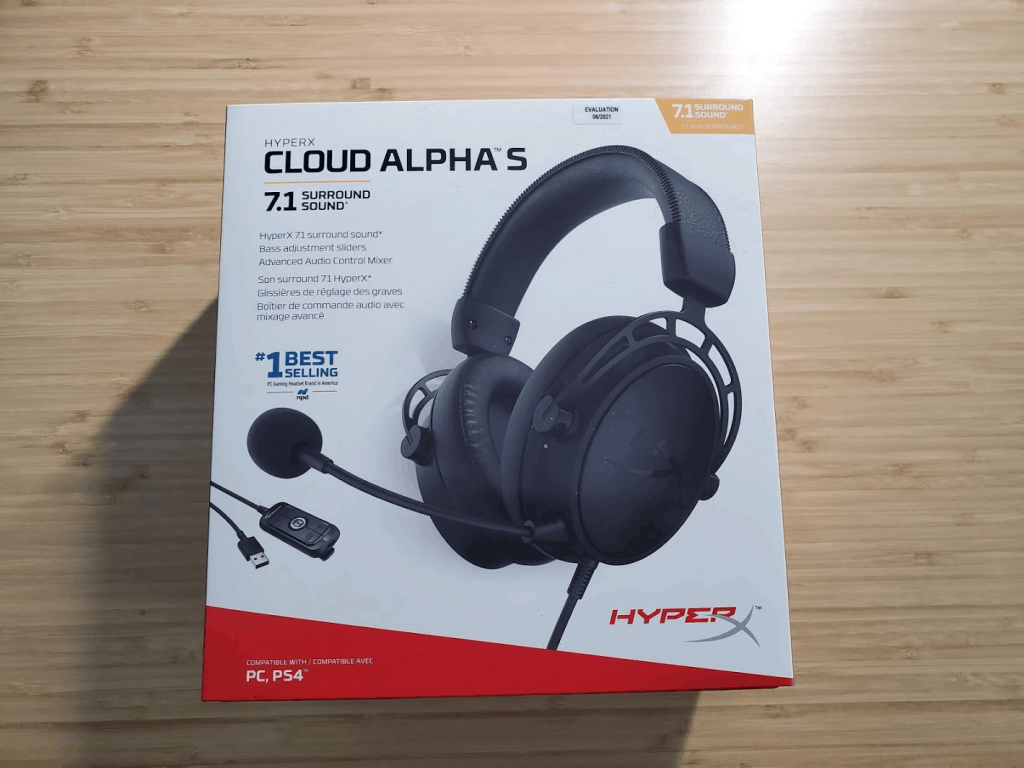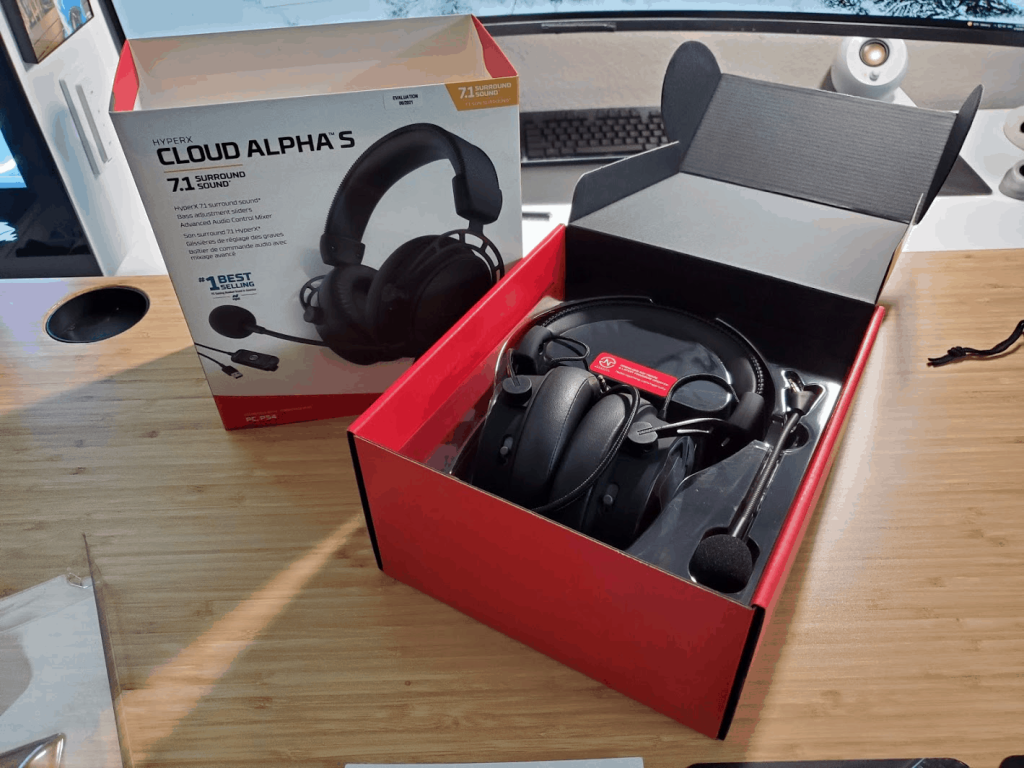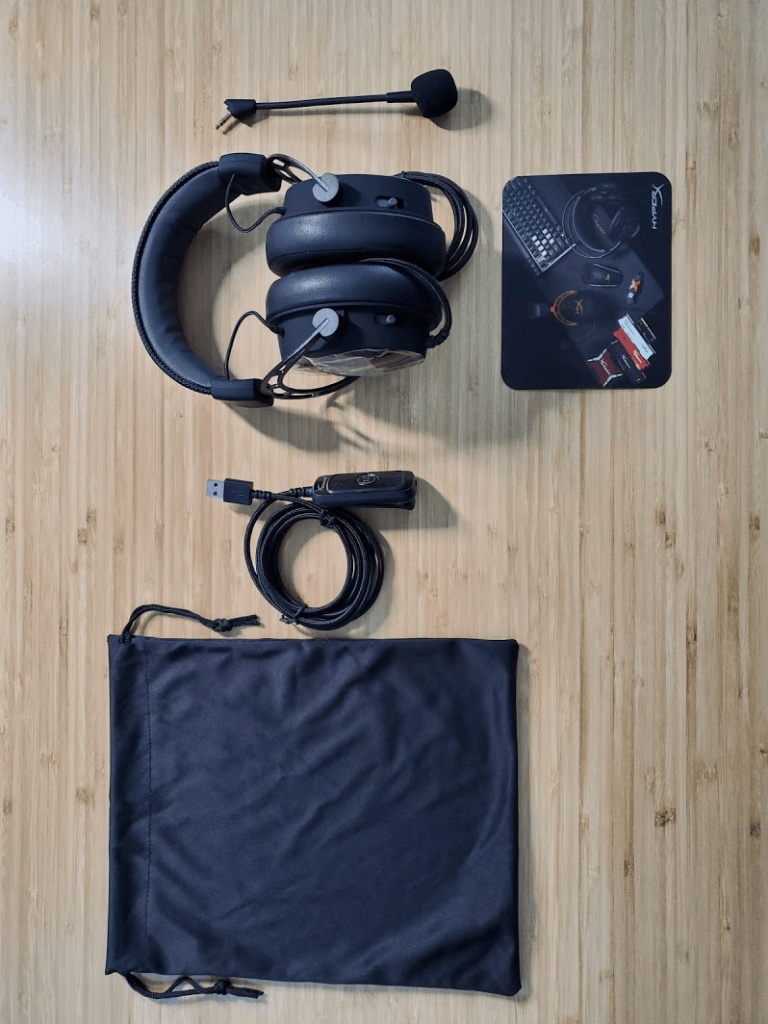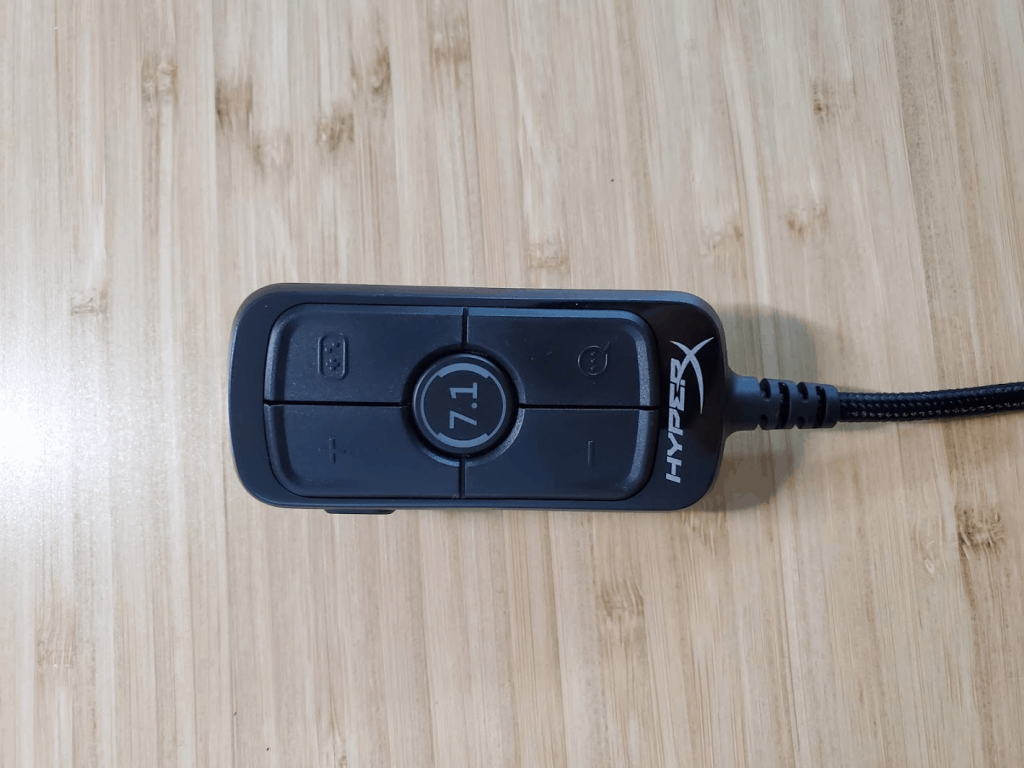There are many headsets on the market that advertise surround sound features, but none as comfortable as the HyperX Cloud Alpha S. Whether using its integrated microphone for a Zoom call or kicking back and listening to one of our many immersive audio tracks, this headset’s main appeal is the ability to output extremely clear directional imaging for an immersive surround sound experience with a very comfortable, lightweight frame that can be worn for hours.


Although the HyperX Cloud Alpha S headphones are very light, they are not very portable. The headband doesn’t fold or turn to lay flat, making them difficult to store in a backpack, and the included carrying bag leaves some amount of protection to be desired.
Unlike many other gaming focused headsets, the HyperX Cloud Alpha S features a simple, all-black design that doesn’t scream “GAMER” while on a conference call. Although it looks very similar to its previous iteration, the HyperX Cloud Alpha, I think its design has a very appealing look that will match any setup. This headset is wired, like many of the other headsets in this price range. The HyperX Cloud Alpha S uses a detachable 1/8" TRRS audio cable, and for PC usage, it includes a detachable USB-A dongle that houses the audio controls and mute functions.

The headset is cross-platform, and it is advertised that it will work specifically with PS4 and PC. We found that the control module’s volume and chatmix adjustment didn’t work while using the PS5, PS4 and Xbox consoles. Additionally, when using the headphones with a console, the inbuilt 7.1 surround sound processing seems to be handled by the console’s 3.5mm jack output rather than doing any signal processing on the headset itself.
The aluminum machined frame, detachable microphone and braided cables all feel very premium and high quality, a great addition - especially for the price.
This brings us to its main use-case as a PC-centric headset. The USB controller allows for control of game audio and discord chat balance (albeit not as easy or quick as the Steelseries Arctis headphone line), in addition to a mute button with integrated LED (so you don’t accidentally leak audio when you want to snack during a call), and a toggle for the surround sound. The toggle is very useful when switching between different types of content. Not all content was meant to be listened to in 7.1, especially stereo audio on YouTube, which sounded a bit unnatural.

The headphones are plug and play, however, we recommend installing the included software (HyperX Ngenuity) as it will provide additional options like microphone sidetone and auto optimization of the surround sound balance.
Audio Quality:
The HyperX Cloud Alpha S features a bass slider (moreso a three setting toggle) that allows for more air in the chamber to move around, providing a passive bass boost. When closed, we measured the bass output dropping by about 15db from it’s maximum output while also making a noticeable difference in sound isolation. We noted that the signature was more accurate with the surround sound enabled and the bass sliders opened to the middle setting. Lowering or raising bass sliders seemed to affect the mid-range frequencies.

While light and comfortable, if the ear cups are not completely flush to your head (or if you are wearing glasses), the bass reproduction can vary significantly. The treble range seemed a bit inconsistent. While it’s definitely not comparable to an expensive flat Sennheiser studio monitor, that would be an unfair comparison as those headphones are more than triple the price. The overall frequency response depends on how well the headphones fit your head and how good of a seal you can get around your ears. They allow a decent fit, provided you don’t wear glasses.
The strongest feature of the headset is its very accurate bass frequencies. The mid-frequency response is good with the noted bass slider setting selected, however the treble accuracy seems to dip when compared to the mids and bass no matter what setting of the bass toggle we set it to. Imaging was very good, and it provides extremely clear channel separation from both a stereo and 7.1 surround perspective.
In terms of the microphone, we found that the headset does a great job capturing clear voices while minimizing unwanted audio; however we found that the microphone’s lack of a bass response could make some users with deeper voices sound a fair bit more tinny.
While I wouldn’t call it audiophile grade, the HyperX Cloud Alpha S bass and treble delivery are similar to the SteelSeries Arctis 5/7, and similar Corsair Void 7.1 headsets. I wouldn’t use these headphones as studio monitors, but they are definitely enjoyable for gaming and movie content, and have a more fun audio tone that many headphones seem to go for. I really enjoyed these headphones when playing intense games like Control or Death Stranding, or streaming Dolby Atmos shows like Disney Plus’ Loki. I know I can’t compare these to my 7.1 KEF Home Cinema setup nor my daily driver Sennheiser HD 800 S headphones, but these are an extremely great way to experience an entry level surround sound experience. The detailed directional imaging really lets you feel music in a completely new way, especially if you’ve never really listened to immersive audio tracks before. I could see myself wearing these headphones all day without any fatigue.Rating 8/10
Pros:
- Clear distinct directional imaging
- Extremely lightweight and comfortable
- Very durable and has a long cable
- Very good experience for the price
Cons:
- Inaccurate frequency response in the treble range
- Console support could be better
- Doesn’t pack up on the go easily
- Some issues with seal when wearing glasses

Support IAA by purchasing the HyperX 7.1 Surround Sound Cloud Alpha S!

